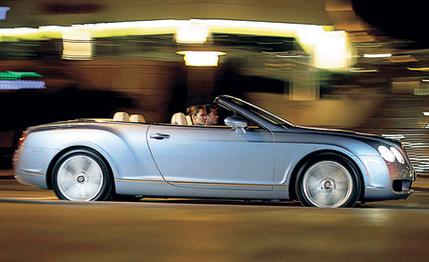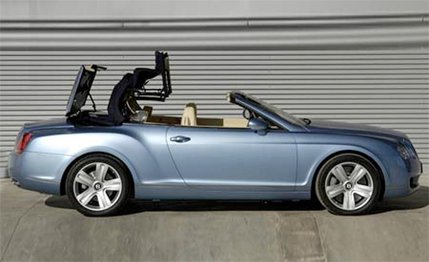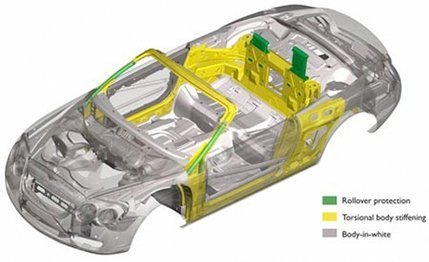 First Drive Review
First Drive Review
Murphy's Law states that if something can go wrong, it will. Bentley's PR types might have considered that before having board member Ulrich Eichhorn demonstrate the power top of the Continental GTC to the assembled press at the car's introduction in Napa, California.
Naturally, the top raised its leading edge in a feeble wave of apology before the whole showy production shuddered to a halt, thwarted by a microswitch snagged on the ample headliner. No big deal, really, except that you can't turn back time. Then, of course, the cars on hand for evaluation erected and stowed their tops all day without drama, proving the demo car was the exception that verifies Murphy's Law.
The elegantly fashioned top is the product of coachbuilder Wilhelm Karmann. The roof is constructed of high-grade materials, with a triple-layer headliner that is truly remarkable for its rich texture, uniform contours, and insulating properties. Fabricated in Germany, the roof is sent to Crewe, England, for installation in the GTC.

The top has four mounting bolts at its base, and the unit is carefully calibrated to deploy toward theoretical points in space where the Bentley's windshield header mounts should be. To make sure that relationship is perfectly maintained, a dimensional jig called a Karmann spider is lowered onto the car's body during the framing process to keep everything in register.
The Bentley's unibody underwent an intensive engineering program to regain structural integrity lost in the decapitation process. Substantial reinforcement was added to the rocker sills, the structure around the doors and rear passenger cell, and the windshield, adding about 240 pounds to the vehicle. Cross braces were added below the car to tie the sills, frame rails, and subframe mounts together. Finally, tubular reinforcement was added to the windshield frame so it could join forces with two pop-up rear hoops to provide rollover protection.
Making space for the top ate into luggage space, which dropped from 13 cubic feet in the coupe to 8 in the GTC, and reduced elbowroom in the back seat from 58.6 inches to 52.6. Bentley claims body-shell torsional stiffness of 30Hz, which is excellent for a convertible. That claim was largely borne out during a day's drive; only once did alternating front-wheel bump impacts produce a brief shiver in the car's cowl. It must have been the perfect sequence to excite the structure's natural frequency, because the car felt as stiff as a board the rest of the time.

Not the ride. That's as smooth and tranquil as its fixed-head sibling's, or perhaps even better because of changes made to the chassis to accommodate the articulating top. The rear shock absorbers were moved from the upper suspension arms to the lower links to make room for the roof's stowage bay, and the front-suspension subframe is bolted directly to the body shell. That required retuning of the front elastokinematics, producing — if anything — even better steering quality.
What hasn't changed is the tidal surge of irresistible torque from the 6.0-liter twin-turbo W-12, or the creamy four-wheel drive. But you can now enjoy these things alfresco and be visible to the public in the accepted aristocratic style. Even Murphy would have approved.